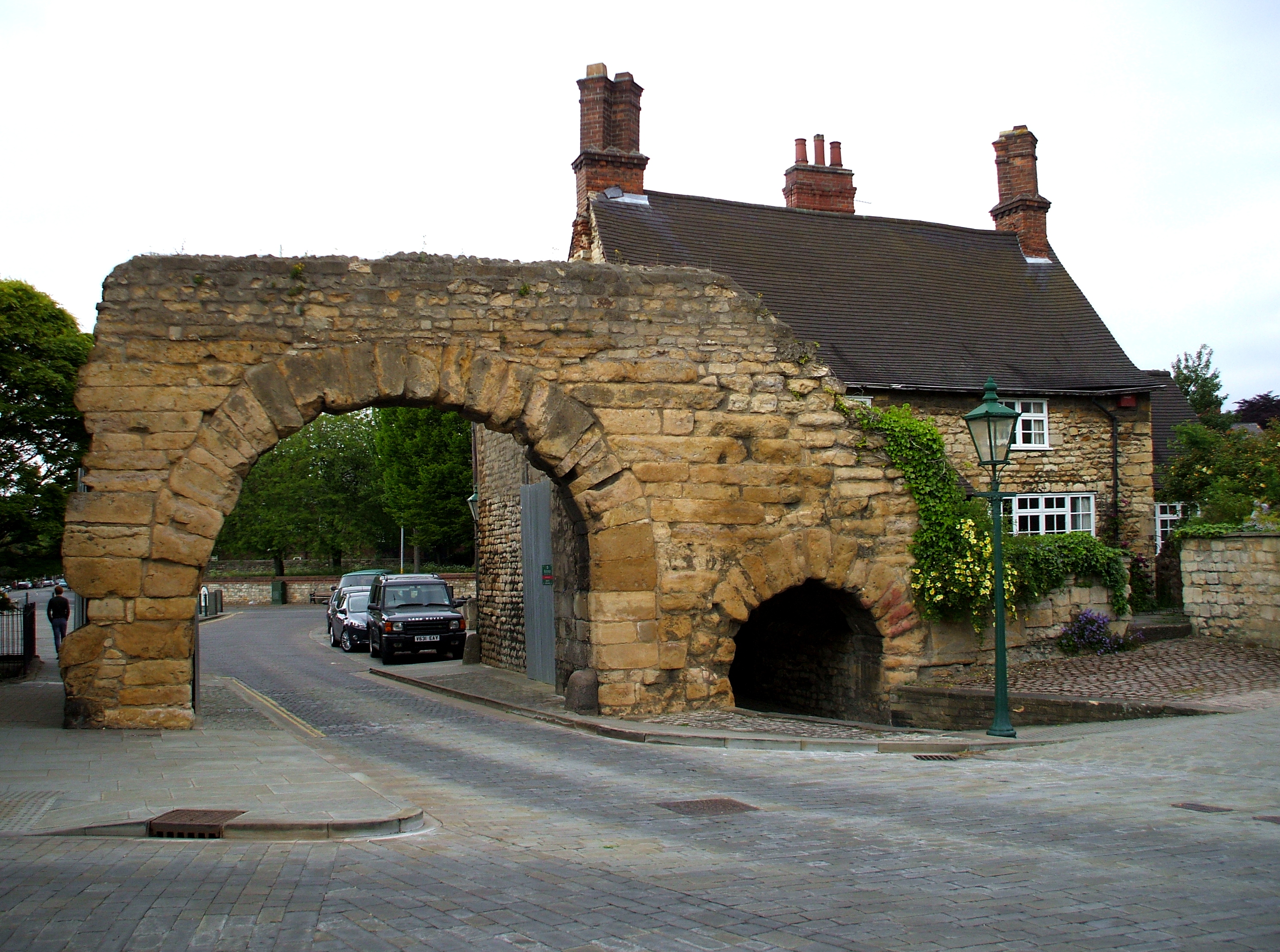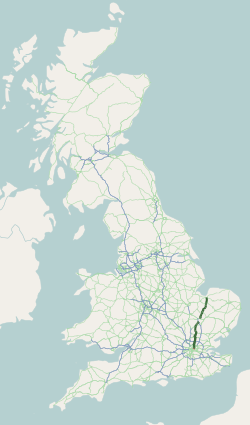|
Spital Brook
The Spital Brook is a minor tributary of the River Lea in Hertfordshire, England. The Spital Brook rises in Hoddesdonpark Wood and flows eastwards, passing through Barclay Park, the former Hoddesdon Common, on its journey to the Lea, while an unnamed parallel stream to the south has been diverted to form ornamental waterbodies located within the former parkland of Broxbournebury. The stream crosses the Roman road, Ermine Street, before going under the A10 and Cock Lane. The original crossing place or ford of Spital Brook in Cock Lane remains and the original route it took ran parallel to the brook in a north–south direction. The brook passes through its namesake area, Spital Brook and marks the traditional boundary between the two parishes of Hoddesdon and Broxbourne. The stream runs parallel to the Lea Valley Lines by Broxbourne Station until it meets the River Lea The River Lea ( ) is in the East of England and Greater London. It originates in Bedfordshire, in the ... [...More Info...] [...Related Items...] OR: [Wikipedia] [Google] [Baidu] |
River Lea
The River Lea ( ) is in the East of England and Greater London. It originates in Bedfordshire, in the Chiltern Hills, and flows southeast through Hertfordshire, along the Essex border and into Greater London, to meet the River Thames at Bow Creek (England), Bow Creek. It is one of the largest rivers in London and the easternmost major tributary of the Thames. The river's significance as a major east–west barrier and boundary has tended to obscure its importance as north–south trade route. Below Hertford the river has since medieval times had alterations made to make it more navigable for boats between the Thames and eastern Hertfordshire and Essex, known as the Lee Navigation. This stimulated much industry along its banks. The navigable River Stort, the main tributary, joins it at Hoddesdon. While the lower Lea remains somewhat polluted, its upper stretch and tributaries, classified as chalk streams, are a major source of drinking water for London. An artificial waterway k ... [...More Info...] [...Related Items...] OR: [Wikipedia] [Google] [Baidu] |
Hertfordshire
Hertfordshire ( or ; often abbreviated Herts) is a ceremonial county in the East of England and one of the home counties. It borders Bedfordshire to the north-west, Cambridgeshire to the north-east, Essex to the east, Greater London to the south and Buckinghamshire to the west. The largest settlement is Watford, and the county town is Hertford. The county has an area of and had a population of 1,198,800 at the 2021 census. After Watford (131,325), the largest settlements are Hemel Hempstead (95,985), Stevenage (94,470) and the city of St Albans (75,540). For local government purposes Hertfordshire is a non-metropolitan county with ten districts beneath Hertfordshire County Council. Elevations are higher in the north and west, reaching more than in the Chilterns near Tring. The county centres on the headwaters and upper valleys of the rivers Lea and the Colne; both flow south and each is accompanied by a canal. Hertfordshire's undeveloped land is mainly agricultural ... [...More Info...] [...Related Items...] OR: [Wikipedia] [Google] [Baidu] |
Ancient Rome
In modern historiography, ancient Rome is the Roman people, Roman civilisation from the founding of Rome, founding of the Italian city of Rome in the 8th century BC to the Fall of the Western Roman Empire, collapse of the Western Roman Empire in the 5th century AD. It encompasses the Roman Kingdom (753–509 BC), the Roman Republic (50927 BC), and the Roman Empire (27 BC476 AD) until the fall of the western empire. Ancient Rome began as an Italic peoples, Italic settlement, traditionally dated to 753 BC, beside the River Tiber in the Italian peninsula. The settlement grew into the city and polity of Rome, and came to control its neighbours through a combination of treaties and military strength. It eventually controlled the Italian Peninsula, assimilating the Greece, Greek culture of southern Italy (Magna Graecia) and the Etruscans, Etruscan culture, and then became the dominant power in the Mediterranean region and parts of Europe. At its hei ... [...More Info...] [...Related Items...] OR: [Wikipedia] [Google] [Baidu] |
Ermine Street
Ermine Street is a major Roman road in England that ran from London (''Londinium'') to Lincoln ('' Lindum Colonia'') and York ('' Eboracum''). The Old English name was ''Earninga Strǣt'' (1012), named after a tribe called the ''Earningas'', who inhabited a district later known as ''Armingford Hundred'', around Arrington, Cambridgeshire, and Royston, Hertfordshire. "Armingford", and "Arrington" share the same Old English origin. The original Celtic and Roman names for the route remain unknown. It is also known as the Old North Road from London to where it joins the A1 Great North Road near Godmanchester. Course Ermine Street begins at Bishopsgate, where one of the seven gates in the wall surrounding Roman London was located. From here it runs north up Norton Folgate, Shoreditch High Street and Kingsland Road through Stoke Newington (forming Stoke Newington Road and Stoke Newington High Street), Tottenham, Edmonton and eastern Enfield (Ponders End, Enfield Hig ... [...More Info...] [...Related Items...] OR: [Wikipedia] [Google] [Baidu] |
A10 Road (England)
The A10 is a major road in England which runs between The City of London and King's Lynn in Norfolk. At its southern terminus, the route meets the A3 directly north of London Bridge, above Monument London Underground station. At its northern end, the A10 meets the A47 and A149 roads south-west of King's Lynn town centre. The route passes through or around primary destinations in Greater London, Hertfordshire, Cambridgeshire and Norfolk, including Dalston, Enfield, Hertford, Cambridge, Ely and Downham Market. The route between Bishopsgate in the City of London and Royston, Hertfordshire, roughly follows the path of Ermine Street, a Roman road. Route City of London At its southern end, the A10 begins at a junction with the A3, on the northern bank of the River Thames. The A3 runs southbound over London Bridge towards Elephant and Castle, before continuing to Clapham, Kingston upon Thames, Guildford and Portsmouth. At the junction the A10 also meets Cannon Street ... [...More Info...] [...Related Items...] OR: [Wikipedia] [Google] [Baidu] |
Hoddesdon
Hoddesdon () is a town in the Borough of Broxbourne, Hertfordshire, lying entirely within the London Metropolitan Area and Greater London Urban Area. The area is on the River Lea and the Lee Navigation along with the New River. Hoddesdon is the second most populated town in Broxbourne with a population of 42,253 according to the United Kingdom's 2011 census. It borders Ware to the north, Nazeing in Essex to the east, and Broxbourne to the south. The Prime Meridian passes just to the east of Hoddesdon. The town is served by Rye House railway station and nearby Broxbourne railway station. History Early history The name "Hoddesdon" is believed to be derived from a Saxon or Danish personal name combined with the Old English suffix "don", meaning a down or hill. The earliest historical reference to the name is in the Domesday Book within the hundred of Hertford. Hoddesdon was situated about north of London on the main road to Cambridge and to the north. The road forked ... [...More Info...] [...Related Items...] OR: [Wikipedia] [Google] [Baidu] |
Broxbourne
Broxbourne is a town in the Borough of Broxbourne in Hertfordshire, England, with a population of 15,303 at the 2011 Census.Broxbourne Town population 2011 It is located to the south of Hoddesdon and to the north of Cheshunt, north of London. The town is near the River Lea, which forms the boundary with Essex, and north of the M25 motorway. To the west of the town are Broxbourne Woods, a national nature reserve. The Prime Meridian runs just east of Broxbourne. Name The name is believed to derive from the Old English words ''brocc'' and ''burna'' meaning ''Badger stream''. History Broxbourne grew around inns on the Great Cambridge Road, now known as the A10. A number of old houses and inns dating from the 16th to the 19th centuries still line the High Street (now the A1170). The Hertfordshire Golf and Country Club is a 16th Century house with later alterations and additions. The Manor of Broxbourne has an entry in the Domesday Book as Brochtsborne, where Broxbourne ... [...More Info...] [...Related Items...] OR: [Wikipedia] [Google] [Baidu] |
Lea Valley Lines
The Lea Valley lines are a set of suburban rail lines running along the Lea Valley in East London, North London and Hertfordshire to Liverpool Street and Stratford. Historically part of the Great Eastern Railway, the lines now form part of the ''Anglia Route'' of Network Rail. Services are operated by London Overground and Greater Anglia. The lines include the Enfield Town branch, the Chingford branch, the Hertford East branch, the Southbury Loop, the Temple Mills branch, and the section of the West Anglia Main Line from Broxbourne towards London Liverpool Street and Stratford. On 31 May 2015, services from London Liverpool Street to Chingford, Cheshunt and Enfield Town were transferred to London Overground; services from London Liverpool Street and Stratford via Tottenham Hale remain with Greater Anglia. Services operated by London Overground are now fully operated by new-built Class 710 rolling stock, replacing older Class 315 and Class 317 stock inherited f ... [...More Info...] [...Related Items...] OR: [Wikipedia] [Google] [Baidu] |
Rivers Of Hertfordshire
A river is a natural stream of fresh water that flows on land or inside caves towards another body of water at a lower elevation, such as an ocean, lake, or another river. A river may run dry before reaching the end of its course if it runs out of water, or only flow during certain seasons. Rivers are regulated by the water cycle, the processes by which water moves around the Earth. Water first enters rivers through precipitation, whether from rainfall, the runoff of water down a slope, the melting of glaciers or snow, or seepage from aquifers beneath the surface of the Earth. Rivers flow in channeled watercourses and merge in confluences to form drainage basins, or catchments, areas where surface water eventually flows to a common outlet. Rivers have a great effect on the landscape around them. They may regularly overflow their banks and flood the surrounding area, spreading nutrients to the surrounding area. Sediment or alluvium carried by rivers shapes the landscape aro ... [...More Info...] [...Related Items...] OR: [Wikipedia] [Google] [Baidu] |
Tributaries Of The River Lea
A tributary, or an ''affluent'', is a stream or river that flows into a larger stream (''main stem'' or ''"parent"''), river, or a lake. A tributary does not flow directly into a sea or ocean. Tributaries, and the main stem river into which they flow, drain the surrounding drainage basin of its surface water and groundwater, leading the water out into an ocean, another river, or into an endorheic basin. The Irtysh is a chief tributary of the Ob river and is also the longest tributary river in the world with a length of . The Madeira River is the largest tributary river by volume in the world with an average discharge of . A confluence, where two or more bodies of water meet, usually refers to the joining of tributaries. The opposite to a tributary is a distributary, a river or stream that branches off from and flows away from the main stream. [...More Info...] [...Related Items...] OR: [Wikipedia] [Google] [Baidu] |






